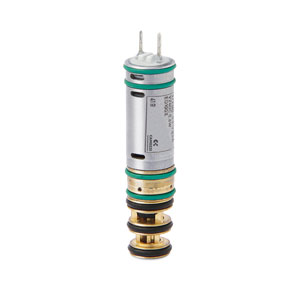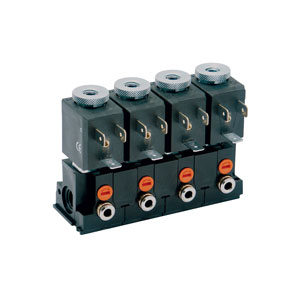Direct and indirect acting 2/2 - 3/2-way solenoid valves
These are fundamental devices in industrial automation, used for controlling fluid flow. The 2/2 solenoid valves allow fluid to pass between two ports, opening or closing the passage based on the applied electrical signal. The 3/2 solenoid valves offer additional options, diverting fluid flow between three ports, allowing it to be directed to two different outputs or interrupting the fluid flow to the use point as in 2/2, and through the third port, allowing the fluid to be discharged. The 5/2 solenoid valves divert fluid flow alternately to two distinct outputs, similar to the 3/2 valves, with corresponding exhaust ports opening alternately. These solenoid valves are widely used in a variety of industrial applications, such as controlling the movement of pneumatic actuators and managing supply and exhaust circuits in pneumatic and hydraulic systems.
Operation of Indirect Acting Solenoid Valves
Also known as servo-assisted, these use a combination of pressure and electromagnetic action to open and close the valve. The piloting can be internal, using the fluid pressure to help operate the valve, or external, assisted by an external pressure source. These valves are particularly effective in handling high flow rates and pressures with low electrical consumption.
Operation of Direct Acting Solenoid Valves
These function by directly using the solenoid to control the opening and closing of the fluid passage without the need for pilot pressure. When an electrical signal is applied, the solenoid creates a magnetic field that moves a plunger inside the valve, allowing fluid to flow through the passage. When the electrical signal stops, the solenoid releases the plunger, stopping the fluid flow. This mechanism allows for quick and precise control of fluid flow in various industrial applications.
Isolation and Shut-off Valves
These are essential components in industrial automation systems, allowing precise and reliable control of fluid flow. Shut-off valves enable the interruption or diversion of fluid flow along a certain line, while isolation valves physically separate two different fluid flows within the same system. These devices are widely used across a variety of industrial sectors, including automotive, electronics, food, and pharmaceuticals, helping to optimise production processes and ensure safe and efficient operation of industrial plants.
Product Availability by Store Location
Hours
 United States
United States






